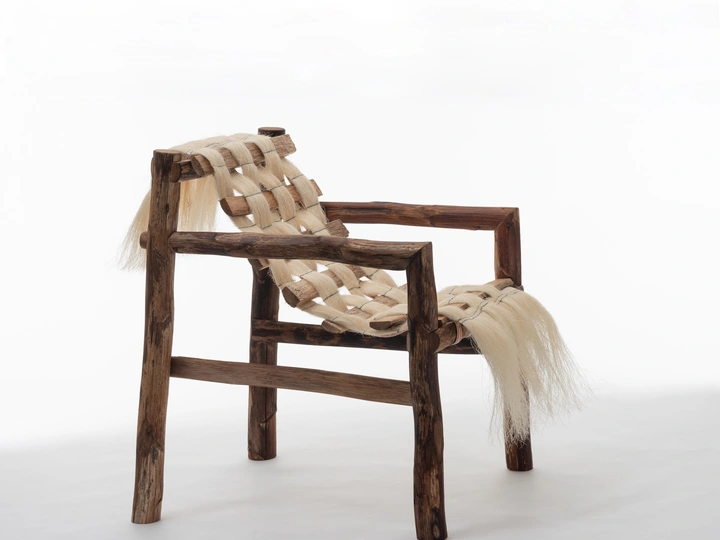Life centered design

Designer with an engineering expertise, I bring a unique blend of technical proficiency, artistic sensibility, and a deep commitment to sustainability to my work.
I began in the engineering field, where I honed my ability to solve complex problems and turn ideas into tangible solutions. Then, I delved into the worlds of creation taking evening classes in Applied Arts, Space Design, and, I immersed myself in the traditions of craftmanship studying Cabinet Making. This foundation prepared me for my studies at the ENSCI-Les Ateliers design school.
My practice of design lies in delving beyond aesthetics to uncover the underlying structures that shape our interactions with the world around us. I have a deep appreciation for interdisciplinary approaches, hands-on craft culture and I am an avid seeker of knowledge. I draw inspiration from philosophy, anthropology, and diverse sources, ranging from indigenous wisdom to occult sciences, to inform my design practice. The concept of redirection design particularly resonates with my vision of a future where design serves as a catalyst for societal transformation towards a more sustainable and just world, facing climate change, biodiversity loss, and social inequalities.
I am deeply committed to the principles of «Life-centered design», a philosophy that counters anthropocentrism by placing all living beings at the forefront of design considerations. This concept manifests in the exploration of traditional techniques, frugal and rooted in the territory. It also prioritizes materials directly sourced from the natural environment or minimally processed.
I am enthusiastic on applying this design philosophy to diverse areas, encompassing product, living, space and food.
Through my work, I aspire to contribute to a collective reimagining of our relationship with the living world, where design serves as a bridge between humanity and nature, fostering a future of shared well-being.
The project began in Marseille's Calanques National Park, fueled by curiosity about two plants species that turned out to be invasive. This sparked a design research on their impact on the park's ecology. Inspired by Arturo Escobar's concept of Ontological Design, I shifted perspective, viewing the project from the vantage point of the natural environment itself. Within this "Territory skin", I considered these invaders not as a threat, but as part of the dynamic interplay of Life. Their excess growth, disruptive to the established balance, presented a potential resource – could harvesting them contribute to the ecosystem's health?
Further inspired by the rangers' action dedicated to preserving biodiversity, I envisioned a project that actively benefits the environment. That’s how I embraced this design concept centered on Life. This posture challenged me to question structures on which the traditional design stands: the ressource supply modes, the use of technology and the product distribution. All these bathed in anthropocentrism; It was a call for a paradigm shift.
This exploration can be likened to an "onto-nautical journey", where the territory and its biodiversity became the project's primary users. Research delved into the park's ecology, the life cycle and history of the invasive plants, and their complex relationship with humans. Works by Robin Wall Kimmerer and Julia Watson emphasized the importance of integrating traditional wisdom into this work. Furthermore, collaborating with a wood research laboratory allowed me to explore proto-industrial techniques. Using only the natural material, we successfully produced wood panel samples.
This exploration culminated in a series of objects crafted from the invasive plants. More importantly, it yielded valuable tools and concepts that define my design practice. This project serves as a springboard for future interventions in other ecosystems; supporting Life diversity through design.